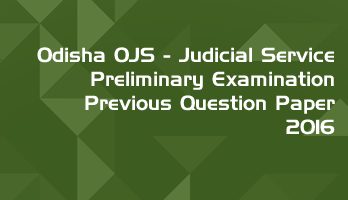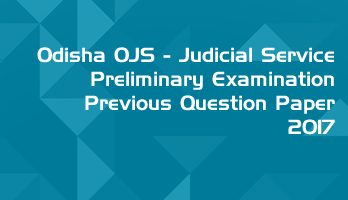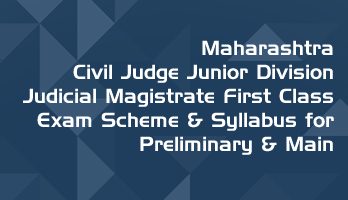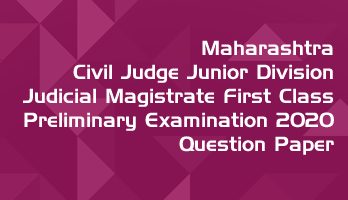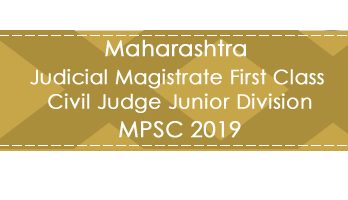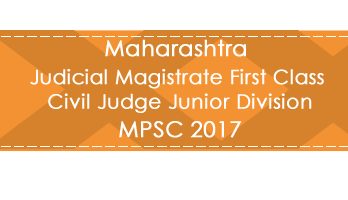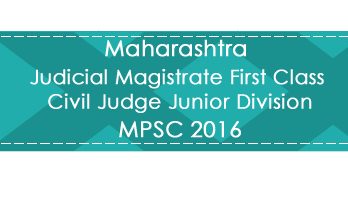Odisha OPSC OJS Judicial Prelims 2025 and 2026 - 155 Mock Tests & Previous Question Papers
- 100 Full Length Mock Tests - with unlimited practice
- 55 Topic wise Mock Tests covering all the topics in the syllabus
- Previous Question Papers - with official answer keys
- Downloadable PDF copies of all bare acts as per syllabus
- Database of over 15000+ MCQs
- Mock Tests designed as per latest syllabus and pattern
- Access valid for one year from date of purchase
- Questions & Answer Choices randomly shuffled in every attempt for better practice
- Accessible 24 x 7 via Smart-Phone browsers, Laptops, Desktops and Tablets
- This question paper, with official answer key is available on our Odisha OJS Preliminary Online Mock Test & Previous Question Papers Series.
- Unlimited access for one year from the date of purchase
- Mock tests are updated as per the latest pattern and syllabus
- See the links at the top to buy the online Odisha OJS Judicial mock tests
1. Indian Constitution was enacted and adopted on:
A. 26th January, 1950
B. 26th November, 1949
C. 15th August, 1947
D. 14th August, 1947
2. The Constitution (97th Amendment) Act, 2011 inserted under Article 19 (1) (c):
A. Associations
B. Unions
C. Organisations
D. Co operative Societies
3. Supreme Court of India permitted passive euthanasia subject to certain guidelines in the case of:
A. Aruna Ramachandra Shanbaugh v. Union of India
B. Gian Kaur v. State of Punjab
C. P. Rathinam v. Union of India
D. Maruti Sripati Dubai v. State of Maharashtra
4. The case of Jaya Bachchan v Union of India relates to:
A. Territorial Constituencies
B. Membership in Rajya Sabha
C. Office of Profit
D. Dissolution of Lok Sabha
5. New States are formed under Article 3 of the Constitution by:
A. A law of the Parliament
B. By Constitutional Amendment under Article 368
C. By a law of the State Legislature concerned
D. By a Law of the State Legislature concerned and law of the Parliament
6. Article 123 deal with:
A. Power of the President of dissolve Lok Sabha
B. Power of the Governor to promulgate ordinances
C. Power of the President to promulgate ordinances
D. Power of the Parliament to pass the bills
7. Doctrine of Pith and Substance relates to:
A. Interpretation of Statutes to solve the problem of competing legislature in the same field
B. Serve the objectionable portions of the statute that violate Fundamental Rights
C. Interpretation of statutes to solve problems arising out of territorial nexus
D. Interpretation of Statutes to solve problems of waiver of Fundamental rights
8. Provision for imposing the President’s rule in case of failure of constitutional machinery in the states is provided under:
A. Article 353
B. Article 360
C. Article 352
D. Article 356
9. Removal or suspension of a member of Public Service Commission shall be done in accordance with:
A. Article 316
B. Article 317
C. Article 350
D. Article 351
10. According to Article 233 the appointment of a district judge shall be done by:
A. The President in consultation with the High Court of the State concerned
B. The Governor of the State concerned in consultation with the High court of the State concerned
C. The Governor in consultation with the Chief Justice of India
D. The collegium of the High Court
11. Existence of two suits, by parties litigating under same title, one previously instituted which is pending at present and the other filed later, wherein a matter in issue in the subsequently filed suit is directly and substantially in issue in the other and the relief claimed in the subsequent suit can effectively be passed by the court of previous instance. Which Section of CPC decides the fate of the subsequently filed suit and its proceeding?
A. Section 11
B. Section 9
C. Section 10
D. Section 12
12. Where there are mutual debts between the plaintiff and the defendant, one debt may be settled against another. This can be a statutory defence to a plaintiff’s action and it is called as:
A. Cross claim
B. Set off
C. Cross demands
D. Cross decrees
13. An attachment before judgment order takes away:
A. Right to ownership
B. Right to file suit
C. Power to alienate the property
D. Capacity of execution of a decree
14. The three pillars on which foundation of every order of injection rests:
A. Prima facie case, injury with damage and balance of inconvenience
B. Prima facie case, reparable injury and balance of convenience
C. Prima facie case, irreparable injury and balance of convenience
D. Prima facie case, damage without injury and balance of convenience
15. ______ is the enable subordinate courts to obtain in non appealable cases the opinion of the High Court in the absence of a question of law and thereby avoid the commission of an error which could not be remedied later on.
A. Review
B. Reference
C. Appeal
D. Revision
16. Which of the propositions are correct?
(i) Legal set off requires a court fee, but not court, fee is required in the case of an equitable set off.
(ii) In a legal set off amount claimed can be time barred and in an equitable set off claim cannot be allowed it is time barred.
(iii) In a legal set off it is not necessary that cross demands arise out of same transaction and in an equitable set off cross demands must arise out of same transaction.
(iv) Legal set off can be for any amount not ascertained and an equitable set off may be allowed only for an unascertained amount.
A. Only (i) is correct
B. Only (i) and (iii) are correct
C. Both (i) and (iv) are correct
D. None of the choices
17. Where a party to a suit requires information as to facts from the opposite party, he may administer to his adversary a series of questions. It is called as:
A. Question petition
B. Question pamphlet
C. Interrogatories
D. Discovery
18. ______ is a suit filed by or against one or more persons on behalf of themselves and others having the same interest in the suit.
A. Joint suit
B. Representative suit
C. Collusive suit
D. Collective suit
19. A person appointed by the court to protect, preserve and manage the property during the pendency of the litigation:
A. Amicus curiae
B. Preserver
C. Protector
D. Receiver
20. A, a railway company, is in possession of goods as a consignee. It does not claim any interest in the good except lien of wharfage, demurrage and freight but rival claims have been made by B and C adversely to each other. A can institute:
A. an application to defy the same
B. An interpleader suit
C. Friendly suit
D. None of the choices
21. Find out the correct remainder of the statement. “The object of investigation is”:
A. To collect evidence that aids the court in finding out the truth
B. To collect information that helps in punishing the person
C. To collect the information to arrest the person
D. None of the choices
22. Any police Officer may arrest without warrant any person:
A. Who has been concerned in any cognizable offence
B. Who has been proclaimed as an offender
C. Who is reasonably suspected of being a deserter from any armed forces
D. All of the choices
23. Under Section 37 of Cr. P.C. Every person is bound to assist a Magistrate or Police Officer in the taking or preventing the escape of any other person whom such Magistrate or Police Officer is authorized to arrest:
(a) In the prevention or suppression of a breach of peace
(b) In the prevention of any injury to the committed to any railway, canal, telegraph or public property
A. (a) only
B. (b) only
C. Both (a) and (b)
D. None of the choices
24. ______ shall establish a Court of Session for every Sessions division.
A. State Government
B. Central Government
C. Supreme Court
D. President of India
25. F.I.R. Under Section 154 of the Cr. P.C. is not a substantive piece of evidence. Its only use is to contradict or corroborate the matter there of. Held in ______ case.
A. Shambhu Dass v. State of Assam, AIR 2010 SC 3300
B. Ravishwar Manjhi v. State of Jharkhand AIR 2009 SC 1262
C. State of Karnataka v. K. Yrappa Reddy 1999 (8) SSC 715
D. Sheelam Ramesh v. State of Andhra Pradesh 1999 (8) SSC 369
26. ______ Section of the Cr. P.C. deals with medical examination of the victim of rape.
A. Section 164
B. Section 164 A
C. Section 166
D. Section 166 B
27. Whenever a change is altered or added to by the court after the commencement of the trial, the prosecutor and the accused:
A. Shall be allowed to recall or resummons and examine with reference to such alteration or addition, any witness who may have been examined
B. Shall be allowed to recall or resummons and examine with reference to such alteration or addition, any witness who may have been examined, unless the Court, for reasons to be recorded in writing, considers that the prosecutor or the accused, as the case may be, desires to recall or re examine such witness for the purpose of vexation or delay or for defeating the ends of justice
C. Shall not be allowed to recall or resummons and examine with reference to such alteration or addition, any witness who may have been examined
D. Shall not be allowed to recall or resummons and examine with reference to such alteration or addition, any witness who may have been examined, because such witness may be vexed or trial gets delayed or is defeated
28. What persons may be charged jointly?
(i) Persons accused of the same offence committed in the course of the same transaction
(ii) Persons accused of an offence and persons accused of abetment of, or attempt to commit, such offence
(iii) Persons accused of different offences committed in the course of the some transaction
(iv) Persons accused of more than one offence of the same kind, within the meaning of Section 219 committed by them jointly within the period of twelve months
A. i, ii, and iii
B. i, iii and iv
C. All of the choices
D. None of the choices
29. Causing miscarriage, an offence punishable under the Indian Penal Code (45 of 1860), with the permission of the Court before which any prosecution for such offence is pending, be compounded by ______
A. The person who caused miscarriage
B. The husband of the woman to whom miscarriage is caused
C. The woman to whom miscarriage is caused
D. The caretaker of the woman
30. ______ confers the power upon the High Court to transfer cases and appeals:
A. Section 406
B. Section 407
C. Section 405
D. Section 404
31. Propositions regarding confession of a co accused, not required to be on oath and cannot be tested by cross examination are:
(i) Is no evidence within the meaning of S .23 of Evidence Act and cannot be the foundation of a conviction
(ii) The only limited use which can be made of a confession of a co accused is by way of furnishing an additional reason for believing such other evidences as exists
(iii) Is a weak type of evidence and is much weaker than the evidence of an approver
A. Only (ii) and (iii) are correct
B. Only (i) and (iii) are correct
C. Only (i) and (ii) are correct
D. (i), (ii) and (iii) are correct
32. Original document is the best evidence – Exception to this rule is contained in:
A. Indian Evidence Act
B. Criminal Procedure Code
C. Bankers Books Evidence Act
D. None of the choices
33. Reliability of Multiple dying declarations came for discussion under which case?
A. Vimal v. State of Maharashtra, 2006 AIR SCW 5953
B. Pratap Mishra v. State of Orissa, AIR 1977 SC 1307
C. State of Maharashtra v. Dr Praful B Desai (2003) 4 SCC 601
D. None of the choices
34. “The doubt, the benefit of which of accused is entitled, must be such as, rational thinking, sensible man may fairly and reasonably entertain, not the doubts of a vacillating mind that has not the moral courage to decide but shelters itself, in a vain and idle scepticism. There must be doubt which a man may honestly and conscientiously entertain”.
A. Cockburn
B. Lord Halsbury
C. Lord Black
D. None of the choices
35. “The DNA test cannot rebut the conclusive presumption envisaged under Section 12 of the Indian Evidence Act. The parties can avoid the rigor of such conclusive presumption only by proving non access which is a negative proof.” It was so held in which case:
A. Shaik Fakruddin v. Shaik Mohammed Hasan AIR 2006 AP 48
B. Siddaramesh v. State of Karnataka (2010) 3 SCC 152
C. Kailash v. State of Madhya Pradesh AIR 2007 SC 107
D. Somwanti v. State of Punjab, AIR 1963 SC 151
36. An accomplice is unworthy of credit unless he is corroborated in material particulars is a:
A. Presumption of fact
B. Presumption of law
C. Conclusive proof
D. None of the choices
37. A dispute regarding handwriting can proved by ______ .
A. Calling an expert
B. Examining a person acquainted with the handwriting of the writer of the questioned document
C. Calling an expert and Examining a person acquainted with the handwriting of the writer of the questioned document
D. None of the choices
38. “The time tested rule is that acquittal of a guilty person should prefer to conviction of an innocent person. Unless the prosecution established the guilt of the accused beyond reasonable doubt a conviction cannot be passed on the accused. A criminal court cannot afford to deprive liberty of the appellants, lifelong liberty, without having at least a reasonable level of certainty that the appellants were the real culprits.” In which case Supreme Court held so:
A. Rang Bahadur Singh V. State of U.P. AIR 2000 SC 1209
B. Ramanath v. State, AIR 1953 SC 420 (Supreme Court)
C. Sardul Singh Caveeshar v. State of Bombay, AIR 1957 SC 747 (Supreme Court)
D. State v. Nalini, AIR 1999 SC 2640 (Supreme Court)
39. Section ______ of the Evidence Act provides that where a security procedure has been applied to an electronic record at a specific time, the record is deemed to be a secure electronic record from such time until the time of verification.
A. Section 85 A
B. Section 85 B
C. Section 67 A
D. Section 65 B
40. A subsequent case which referred to the principles of Praful Desai Judgement:
A. Dr. Kumar Saha v. Dr. Sukumar Mukherjee
B. Nivrutti Pandurang Kokate v. Maharashtra
C. Goutham Kundu v. State of west Bengal
D. Mohd. Kalam v. Bihar
41. A, being a public servant directed by law to take property in execution, in order satisfy a decree pronounced in B’s favour by a court of law, knowingly disobeys that discretion of law, with the knowledge that he is likely thereby to cause injury to B. A has committed the offence defined in Section.
A. Section 166
B. Section 167
C. Section 157
D. Section 158
42. Which of the following does not form part of Actus Reus?
A. Thought of conduct
B. Result of conduct
C. Circumstances as are specified by law
D. Conduct
43. Under which of the cases can a statute exclude mens rea?
A. Public nuisance
B. Cases in public interest
C. Both in Public nuisance and cases in public interest
D. None of the choices
44. A with a view to murdering D enters D’s bedroom at night when D is out a station. A is guilty of:
A. House trespass
B. Attempt to murder
C. Murder
D. No offence
45. Criminal conspiracy is defined by:
A. Section 120
B. Section 120 – B
C. Section 120 – A
D. Section 120 – D
46. X meets Z on the National Highway, shows a knife and demands money, and gold ornaments found on the body of Z. He has committed:
A. Theft
B. Dacoity
C. Extortion
D. Robbery
47. Dacoity can cover:
A. Robbery based on extortion
B. Robbery based on theft
C. Robbery based on extortion and theft
D. None of the choices
48. Use of violence by a member of unlawful assembly, in furtherance of their common object will constitute offence of ______
A. Rioting
B. Assault
C. Affray
D. None of the choices
49. The defence of consent has no application in cases of:
(a) Causing grievous hurt
(b) Causing death
A. (a) only
B. (b) only
C. Both (a) and (b)
D. None of the choices
50. The essence of sedition under the Indian Penal Code is / are:
A. Result
B. Intention
C. Both intention and result
D. Benefits or gain of the accused
Odisha OPSC OJS Judicial Prelims 2025 and 2026 - 155 Mock Tests & Previous Question Papers
- 100 Full Length Mock Tests - with unlimited practice
- 55 Topic wise Mock Tests covering all the topics in the syllabus
- Previous Question Papers - with official answer keys
- Downloadable PDF copies of all bare acts as per syllabus
- Database of over 15000+ MCQs
- Mock Tests designed as per latest syllabus and pattern
- Access valid for one year from date of purchase
- Questions & Answer Choices randomly shuffled in every attempt for better practice
- Accessible 24 x 7 via Smart-Phone browsers, Laptops, Desktops and Tablets
51. All instruments for the purpose of limitation shall be deemed to be made with reference to:
A. Gregorian calendar
B. English calendar
C. Roman calendar
D. Nanak Shahi calendar
52. Section 3 of the Limitation Act does not apply to:
A. Suits
B. Applications
C. Executions
D. None of the choices
53. Which of the claims under Section 3 of the Limitation Act is treated as a separate suit?
A. Set off
B. Counter claim
C. Both set off and counter claim
D. Neither set off nor counter claim
54. Section 3 of the Limitation Act is applicable to the period prescribed by any:
A. Local Law
B. Special Law
C. Both Local and Special Laws
D. Neither Local nor Special Laws
55. Time barred debt can be claimed as:
A. Set off
B. Counter claim
C. A fresh suit
D. None of the choices
56. In order to attract Section 4 of the Limitation Act, the court should be closed:
A. For the whole of the day
B. During any part of normal working hours
C. For substantial part of the day
D. For more than half of the normal working hours
57. Under the Limitation Act, legal disabilities are:
A. Minority
B. Insanity
C. Idiocy
D. All of the choices
58. Acknowledgement made by a person other than a person under liability is good if the person making it is:
A. A relative of the person under liability
B. An agent of the person under liability
C. A servant of the person under liability
D. Is the master of the person under liability
59. Under Section 19 for the extended period of limitation the part payment must be:
(a) In the handwriting of the person making the payment
(b) In the writing signed by the person making the payment
A. (a) only
B. (b) only
C. Either (a) or (b)
D. Neither (a) nor (b)
60. An Ex parte decree can be set aside within 30 days from:
(a) The date of the Ex parte decree
(b) knowledge of the Ex parte decree where summon or notice was not dully served
A. (a) only
B. (b) only
C. Both (a) and (b)
D. Neither (a) nor (b)
61. Under the Transfer of Property Act, instrument means:
(a) Non testamentary instrument
(b) Testamentary instrument
A. (a) only
B. (b) only
C. Both (a) and (b)
D. Neither (a) nor (b)
62. Under the Transfer of Property Act, attached to the earth means:
A. Rooted in the earth as trees and shrubs
B. Embedded in the earth as walls and buildings
C. Attached to what is so embedded for the beneficial enjoyment of that to which it is attached
D. All of the choices
63. Which Section of the Transfer of Property Act explains, “He who accepts the benefit under the instrument must adopt the whole of it”?
A. Section 52
B. Section 41
C. Section 35
D. Section 53A
64. Actionable claim means:
A. Unsecured debt
B. Any debt
C. Claim recognized by civil courts to grant relief
D. All of the choices
65. To create an interest for the benefit of an unborn person which of the following requirements should be there?
A. No direct interest
B. Prior interest
C. Absolute interest
D. All of the choices
66. Which conditions apply to create a vested interest?
A. It is not defeated by the death of the transferee before he obtains possession
B. It is transferable and heritable
C. it accrues in the present and immediately, even though the enjoyment is postponed
D. All of the choices
67. The act of transferring property during the pendency of a proceeding makes the transfer:
A. Void
B. Voidable
C. Neither void nor voidable
D. Illegal
68. X sells a property to z with a condition that he must live in it. The condition is:
A. Void
B. Voidable
C. Legal
D. None of the choices
69. Which of the following is not a transfer of property?
A. Sale
B. Mortgage
C. Lease
D. Partition
70. How can a transfer of property be made?
(a) Orally
(b) By a registered instrument
A. (a) only
B. (b) only
C. Both (a) and (b)
D. Neither (a) nor (b)
71. Where the proposal made is to be accepted by letters sent through post, the contract is completed, the moment:
A. The letter accepting the proposal is posted
B. When the letter reaches the proposer
C. The postman delivers the letter to the proposer
D. The postman delivers the letter to a person other than the proposer
72. A revokes by telegram his proposal to B, before its acceptance by B, to sell his house at a certain price. The revocation is complete against A when:
A. The telegram is dispatched
B. The telegram is returned undelivered
C. The telegram is sent to a friend of A
D. B learns that the telegram has been received by A
73. In an unconscionable contract the burden of proving that the contract was not induced by undue influence lies on:
A. The person who is in a position to dominate the will of another
B. The person who accepted the proposal
C. The friend of the acceptor
D. The friend of the proposer
74. A contract is voidable if consent to an agreement:
A. Is based on a mistake as to law
B. One of the parties was under a mistake of fact
C. Both the parties are under a mistake as to a matter of fact essential to the agreement
D. Consent is caused by coercion, fraud or misrepresentation
75. A businessman enters into an agreement with a Chartered Accountant to pay him fees and commission for the tax saved by so arranging the accounts as to conceal the true income of the business. Any dispute between the Businessman and the Chartered Accountant on the fee and commission is to be settled by arbitration. The agreement is:
A. Void
B. Voidable
C. Voidable in part
D. Void in part
76. Under an agreement A sells to B his skin bleaching products business “Intimate Whitener” and the good will of the business with the condition that A will not carry on such similar business throughout India so long as B carries it on anywhere in India. The agreement records that this condition is reasonable and that no court will have jurisdiction to examine this condition. The agreement is:
A. Void
B. Voidable
C. Voidable in part
D. Void in part
77. A agrees to pay B Rs.1 Lakh if X is not made the Prime Minister after he wins in the general election for choosing members of parliament. According to the Contract Act, this is a contingent contract under:
A. Section 35
B. Section 34
C. Section 33
D. Section 32
78. Where the order, in which reciprocal promises are to be performed is not expressly fixed by the contract, they shall be performed in the order which:
A. The nature of the transaction requires
B. Is required by the acceptor
C. Is required by the arbitrator appointed by the proposer and acceptor
D. Is required by the arbitrator appointed by the proposer and acceptor
79. A bailor is liable for damages arising to the bailee from the faults in the goods, if he did not disclose to the bailee his awareness of all:
A. The faults
B. The faults which interfere with the use of the goods
C. The faults which materially interfere with the use to the goods
D. The faults which make them valuable for some other use
80. An agent has to pay compensation to his principal for his misconduct which results in losses that are:
A. An indirect result of the misconduct
B. Remotely caused by the misconduct
C. Indirectly and remotely caused by the misconduct
D. Directly caused by the misconduct
81. One person is deemed to be an agnate of another if they are related to each other:
A. By blood or adoption wholly through a male
B. Not wholly through males
C. Wholly through a female
D. Not wholly through females
82. The general rules of succession of a Hindu male dying intestate are contained is Section ______ of the Hindu Succession Act, 1956.
A. Section 7
B. Section 8
C. Section 14
D. Section 15
83. Husband in Entry (a) of Section 15 (1) of the Hindu Succession Act, 1956 includes:
(a) Husband of a subsisting marriage
(b) a divorced husband
A. (a) only
B. (b) only
C. Both (a) and (b)
D. Neither (a) nor (b)
84. Under Section 19 of the Hindu Succession Act, 1956, if two or more heirs succeed together to the property of an intestate, they shall take the property as:
(a) Tenants in common
(b) Joint tenants
A. (a) only
B. (b) only
C. Either (a) or (b)
D. neither (a) nor (b)
85. The right of a child in the womb at the time of the death of the Hindu intestate is provided under the Hindu Succession Act in:
A. Section 19
B. Section 20
C. Section 21
D. Section 22
86. An Indian Christian Under the India Succession Act, 1925 means:
A. Native of India
B. A native of India who is or in good faith is of unmixed Asiatic descent
C. A native of India who is or in good faith professes the Catholic religion
D. A native of India who is or in good faith claims to be of unmixed Asiatic descent and who professes any form of the Christian religion
87. The domicile of a wife under the Indian Succession Act, 1925 is:
A. The place of her birth
B. The place of the her education
C. The place where her family last resided
D. That of her husband
88. Under Section 20 of the Indian Succession Act, 1925 a husband on marriage:
A. Acquires an interest in the wife’s property
B. Does not acquire and interest in the wife’ property
C. Becomes the trustee of the wife’s property
D. Becomes the guardian of the wife’s property
89. The property of an intestate where he has left no lineal descendants can be distributed under the Indian Succession Act, 1925 only after deducting the share of:
A. His widow
B. His children
C. His step children
D. His parents
90. Privileged Will are those made by:
A. Any person above 18 years of age
B. Soldiers
C. Soldiers or airmen engaged in warfare or a mariner at sea
D. A mariner at land
91. No suit for the recovery of possession can be filed under Section 6 of the Specific Relief Act, after the expiry of:
A. Six months for the date of dispossession
B. Nine months from the date of dispossession
C. Twelve months from the date of dispossession
D. Eighteen months form the date of dispossession
92. A Contract can be specifically enforced:
A. Where compensation is adequate relief for the non-performance of the contract
B. Where the contract by it’s nature is determinable
C. Where it involves the performance of continuous duty which the court cannot supervise
D. None of the choices
93. Which of the following can be specifically enforced?
A. A contract for sale of property under allotment
B. Mere agreement to enter into Soldiers or airmen engaged in warfare or a mariner at sear act
C. Contract to marry
D. None of the choices
94. A defendant can take any of the following defences in a suit for specific performance:
A. Money is adequate compensation
B. Uncertainty of the terms of the contract
C. Contract made in excess of power
D. All of the choices
95. Any one of the following grounds will prevent a plaintiff from seeking specific enforcement:
A. Plaintiff has violated an essential term of the contract
B. Plaintiff has acted fraudulently
C. Plaintiff has acted at variance
D. All of the choices
96. Relief of specific performance can be granted for enforcing:
A. Civil rights
B. Penal laws
C. Both civil rights and penal laws
D. Neither civil rights nor penal laws
97. A suit for possession under Section 5 of the Specific Relief Act can be filed within:
A. Three years
B. Six years
C. Twelve years
D. Thirty years
98. Section 13 of the Specific Relief Act, has no application when the transfer has been effected in respect of property whose:
A. Vendor has no title to the property
B. Vendor has title to the property
C. Vendor has imperfect title
D. None of the choices
99. Relief of Rescission is granted in cases where:
A. Contract is void
B. Contract is voidable
C. Contract is both voidable and void
D. Contract is neither void nor voidable
100. A declaration under Section 34 of the Specific Relief Act can be sought by:
A. A stranger having no interest in the property
B. A person whose legal character or a right to property is denied
C. A person whose legal character or right to property is not denied
D. All of the choices
- This question paper, with official answer key is available on our Odisha OJS Preliminary Online Mock Test & Previous Question Papers Series.
- Unlimited access for one year from the date of purchase
- Mock tests are updated as per the latest pattern and syllabus
- See the links below to buy the online Odisha OJS Judicial mock tests
Odisha OPSC OJS Judicial Prelims 2025 and 2026 - 155 Mock Tests & Previous Question Papers
- 100 Full Length Mock Tests - with unlimited practice
- 55 Topic wise Mock Tests covering all the topics in the syllabus
- Previous Question Papers - with official answer keys
- Downloadable PDF copies of all bare acts as per syllabus
- Database of over 15000+ MCQs
- Mock Tests designed as per latest syllabus and pattern
- Access valid for one year from date of purchase
- Questions & Answer Choices randomly shuffled in every attempt for better practice
- Accessible 24 x 7 via Smart-Phone browsers, Laptops, Desktops and Tablets




